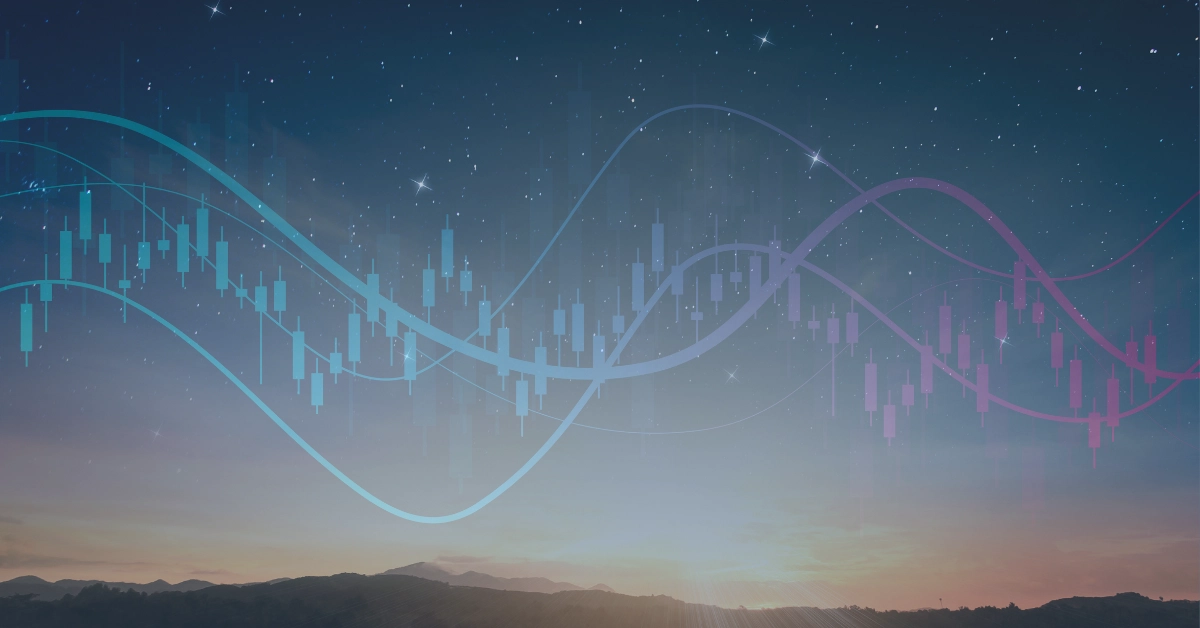The morning star candlestick pattern strongly indicates a potential bullish reversal. When it fully forms, it signals that the price declines to trade lower.
Charting and trading this Japanese candlestick pattern can give you a reliable, actionable, and even accurate reference for the potential price movement of a currency pair, specifically if it will reverse from its prevailing bearish trend.
This article is all about morning star candlestick patterns; its definition, how it works, the best practices in spotting it, and how it compares with other candlestick patterns. Read on to learn more!
What Is a Morning Star Candle?
Buy the long and sell the high—that’s the core principle of forex trading. However, the common dilemma of forex traders is (actually) predicting market points of highs and lows.
To make their prediction possibly accurate, a trader usually monitors the trading chart, spots any price pattern, and positions a trade based on the found market pattern.
The morning star candlestick pattern is one market pattern proven to provide a strong signal.
This Japanese candlestick pattern is a three-candle pattern that signals a potential bullish reversal. By nature, this Japanese candlestick pattern should be established at the bottom of a downtrend and then form these three candles:
- A large bearish candle indicates the prevailing selling pressure.
- A (really) small-bodied candle presents market indecision and buyers’ influence on the market. This candle should look like a spinning top or doji candle.
- A bullish candle in a comparative size of the first bearish candle to establish the upward trend signal.
Ultimately, this forex pattern formation represents the price’s declining downtrend momentum.
This bullish reversal pattern offers a strong signal because of its complex formation. When one candle among the three doesn’t meet the criteria above, the pattern is invalid. This makes this pattern a reliable signal once fully formed.
However, multi-indicator analysis is always advised when trading the morning star candlestick pattern. Doing so strengthens the accuracy of the signal further.
From Japanese candlestick patterns to support and resistance levels, you can spot and monitor numerous market patterns to help you trade effectively. Joining an online trading community like TRU CommuniTrade will expose you to diverse and proven strategies and tools to help you spot and profit from these market patterns.
Returning, let’s discuss what makes up a morning star candlestick pattern.
How to Identify a Morning Star on the Chart
Make sure you’ve got it right! The morning star candlestick pattern gives a strong reversal signal, so be on the lookout for its formation and have it right!
Here are the five must-forms to confirm whether you’re (actually) looking at a morning star candlestick.
It must form during a market downward trend
As we’ve already established, the formation of a morning star candlestick indicates that the market will potentially reverse its prevailing downtrend to an uptrend.
So, it’s only logical that morning stars are established during a depreciating market—specifically, at the bottom of a downtrend.
Remember, if you’ve noticed market pattern that looks similar to the morning star but in an uptrend market, there’s a chance that it’s an evening star pattern.
First candle must be a long bearish candle
The first candle in the morning star candlestick pattern has to be long and bearish.
These candle characteristics are vital to confirm the signal, representing the ongoing downward market momentum. If it’s not a large bearish candle like it should, it’s safe to assume that you’re looking at a different (or maybe completely random) pattern.
A short middle candle
If you look at the pattern closely, you’ll understand why this is called a morning star candlestick.
Still wondering why? Well, because of its small, almost flat size, it looks similar to a star in the sky—or perhaps, a star in the market dip.
This second candle size ultimately represents the market uncertainty. This is because both buying and selling pressure are present in the market.
Usually, this forms a green candle (bullish) due to the buyers’ dominance in the market. However, the candle color or type doesn’t matter as much as its size. The candle length signals price consolidation or market indecision, thus being significant to this formation.
Note: If this candle does not form but establishes the supposed third candle, it would have formed a bullish engulfing pattern.
Third candle must be a long, bullish candle
The third candlestick must be large and bullish. By large, this bullish candle should be similar to the size of the first candle.
This candle formation further confirms the bullish reversal because of the prevailing strength of buying pressure.
Followed by subsequent bearish candles
Upon the third candle formation, some forex traders may start executing trades based on the signal. However, conservative ones usually wait and see how the market will form the subsequent candles.
For this post-monitoring of the morning star candlestick pattern, you can use a relatively shorter time frame than the one you’ve used for the primary analysis.
Different time frame analysis entails different approaches and strategies. Learn why it is important and the best practices to do it in this TradeGeek lesson: Traders United – Monitor Multiple Time Frames to Trade Forex.
Morning Star vs. Doji Morning Star
In technical analysis, the Doji candlestick has a small candle that indicates market indecision or price consolidation.
Again, a small candle that indicates indecision and consolidation. Sounds familiar?
This is the second candle in this three-candle pattern called the Doji morning star candle. Remember, a doji candle should always form after the first long-bodied red candle (bearish) to represent that the market will potentially reverse.
Morning Star vs. Evening Star
The morning star and evening star patterns share an almost, if not completely similar structure. The only differences between the two are the candle types and the market conditions they formed.
| Criteria | Morning Star Pattern | Evening Star Pattern |
|---|---|---|
| Market Condition | Bottom of downtrend | Peak of uptrend |
| First Candle | Long and bearish | Long and bullish |
| Second Candle | Short candle, usually bullish | Short candle, usually bearish |
| Third Candle | Long and bullish | Long and bearish |
While the morning star is a bullish reversal pattern, an evening star pattern entails a potential bearish reversal trend.
How to Trade the Morning Star Pattern
Trading the morning star pattern requires multi-indicator analysis to ensure the market will indeed reverse to bullish. The usual and effective indicators used for this Japanese candlestick pattern analysis must show the market level, momentum, and price actions. This includes:
- Relative Strength Index (RSI)
- Moving Averages Convergence/Divergence (MACD)
- Fibonacci Retracement
- Pivot Points
- Support/Resistance (S/R) Level
While the morning star pattern can be used for different time frame analyses, our experts found that a 24-hour or 1-day time frame is effective because of its clear perspective. Each candle in this three-candle pattern represents a whole trading day. This allows analysts to look at the market with enough room for market noises.
Is Morning Star a Reliable Forex Pattern?
Yes, the morning star pattern is recognized as one of the most reliable bullish reversal indicators in forex charting.
Its three-candle pattern makes this formation rare and reliable. It basically calls for a three-candle formation, which should have a definite size, color, and trend.
However, as mentioned in the previous section, multiple indicators should always be used when monitoring and trading morning star patterns in the forex market.
Should You Trade the Morning Star Candlestick Pattern?
The morning star candlestick pattern is useful in predicting a currency pair’s potential bullish reversal trend. Knowing what it is, how to spot it, and the best practices for trading it would make your forex charting easier than it usually is.
The morning star pattern is only one of many patterns you can monitor to make informed trading decisions. Check out more TRU Insights and learn more about anything online trading!

















